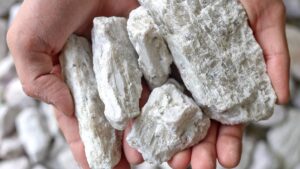Barry FitzGerald: Why lithium miners with co-products are a safer bet

Pic: John W Banagan / Stone via Getty Images
There has been some decent price recoveries in the big name lithium producers from their multi-year lows of March.
They are still beaten up for sure, but given COVID-19 has hit the global auto industry particularly hard, the recovery from the March lows demonstrates continued faith in the lithium-ion battery powered electric vehicle revolution.
The revolution is delayed not derailed by the pandemic. The same goes for the expected recovery in lithium prices which were already under pressure from over-supply before COVID-19 hit.
Not much is expected on the price front for the rest of the year but the delays and deferrals in new lithium projects, and production pullbacks at existing operations, has the industry anticipating a supply squeeze emerging by 2025 at the very latest.
Paul Graves, CEO of big US-listed Argentinian lithium producer Livent, told Goldman Sachs recently that while there was an excess of supply today, we were still early in the EV driven demand growth that people expect.
“It doesn’t take long before today’s capacity is largely consumed,” he said.
Graves said that the industry would need incentive prices to build the additional lithium capacity, and those prices would be “significantly higher than where they are today.’’
He added that when prices did respond to the coming supply gap, the response could be sharp as supply fears gripped the battery and automakers.
It is against that backdrop that Garimpeiro has been wondering if it’s time to ride the EV thematic by taking advantage of the recovering but still beaten up share prices of the companies working on the next generation of lithium projects, but with a twist.
The twist is to seek out lithium projects where revenue from co-products means that the lithium can be brought to the market at the lowest points of the global cost curve.
Two ASX-listed companies of that score come to mind – ioneer (ASX:INR) with its Rhyolite Ridge “Made in America’’ lithium-boron project in Nevada, and Lepidico (ASX:LPD) with its Namibia/Abu Dhabi lithium-caesium-rubidium-potash project.
Both have completed definitive feasibility studies that point to super low costs of lithium production after revenue from co-products.
While lithium prices are expected to recover to at least the $US12,000 ($17,996) per tonne incentive pricing that Livent’s Graves said was needed to grow supply to meet the demands of the EV revolution, Garimpeiro likes the idea of co-product operations having the protection of lower all-in lithium costs.
ioneer is trading at 12c (up from 7.6c in March) for a market cap of $200m.
Its DFS found that thanks to the revenue stream from boron (9t of boron will be produced for each tonne of lithium), it will produce its lithium for $US2,510t on an all-in sustaining cost basis, putting it at the bottom of the cost curve.
Importantly for the project’s ability to support the $US768m capital cost, the market for boron is deep and the price for the material is remarkably stable, trading between $US600 and $US800/t for as long as anyone can remember.
Boron has multiple uses and its supply is currently dominated by Turkey and Rio Tinto from a US operation. ioneer used $US710/t long-run prices in its DFS, so it is looking at $US6,390 from boron to offset against the cost of each tonne of lithium.
Lepidico is trading at 0.7c for a market cap of $36m.
Its DFS pointed to a $US139m project, split into a mine/concentrator in Namibia and a chemical conversion plant in Abu Dhabi, producing lithium at an all-in sustaining cost of $US3,221/t after revenue from other products – caesium, rubidium, and a type of silica used as a partial supplement for cement.
Related Topics

UNLOCK INSIGHTS
Discover the untold stories of emerging ASX stocks.
Daily news and expert analysis, it's free to subscribe.
By proceeding, you confirm you understand that we handle personal information in accordance with our Privacy Policy.








